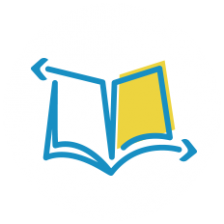Response to intervention (RTI) is a process used by educators to help students who are struggling with a skill or lesson; every teacher will use interventions (a set of teaching procedures) with any student to help them succeed in the classroom—it’s not just for children with special needs or a learning disability. If a student is struggling, his or her teacher will use test scores and other measures of progress to choose a researched and proven intervention suited to help the child learn. If a child does not respond to the initial interventions, more focused interventions are used to help the child master the skill. RTI strategies address both learning and behavior.
The response to intervention process was introduced within the 2004 reauthorization of the Individuals with Disabilities Act (IDEA). While it is not introduced as a part of the law, it was presented within regulatory notes as a method to help identify students with specific learning disabilities. In essence, the legislators and the Office of Special Programs (OSEP) wrote into those notes a statement that asks school districts not to rely on what is called the discrepancy model for identification of specific learning disabilities and consider using interventions tried within RTI. In practice, most school districts use RTI to intervene prior to special education referral, which is good, but very few use the method to identify students. Typically they will try interventions in RTI and when they don’t work, refer for testing using the discrepancy model. The only category that allows you to utilize response to interventions for identification purposes is specific learning disabilities.
The RTI Process Summarized
After a child has received an intervention, his or her progress is tested again. If the child hasn’t improved, the teacher and other educators (the RTI team) will meet with that child’s parents and together, this team will select more intense interventions.
The RTI team will try increasingly intense interventions and even work to identify a specific learning disability (SLD) if the child doesn’t show progress. For example, a child does poorly on a test that requires reading; through the RTI process, the teacher tries reading the questions to the student to find out if the student knows the answer, but is perhaps struggling with reading. Used in this way, the RTI process can help to screen the child to identify a possible SLD or determine if he or she should be referred for further testing.
Even if a child has no learning difficulty, RTI may still be utilized in his or her classroom. Teachers use the RTI process with all students. Although a child may be learning well, or even tackling advanced classes, the RTI process is still available and being used by his or her teacher and school. Read more about RTI and how it relates to special education in the article How is RTI Different From Special Education?
Understanding Levels of Interventions
To help you picture RTI, think of the RTI framework as a pyramid. It is usually divided into three sections: base, middle and top. Movement between sections is determined by a student’s response to certain interventions.
About 80 percent of students and the most commonly used teaching strategies and interventions are found in the base section of the pyramid. This section is called Tier 1 or the primary level of prevention (of failure).
Tier 2 or the secondary level of prevention is in the middle section of the pyramid. Here, the interventions become more intensive because the students are considered to be at a greater risk. About 15 percent of students will be in this section at any given time.
Only about 5 percent of students are in Tier 3, or the tertiary level of prevention, at the top of the pyramid. Here, students receive the most intense and consistent interventions. Although Section 504 (part of the Rehabilitation Act of 1973 that prohibits discrimination based on disability) and special education are both associated with this tier, not all children in this tier are in a special education program.
To learn more about the levels of RTI, read Understanding the Components of RTI and Effective RTI Strategies for Teachers; both teachers and parents will find valuable information in the RTI Strategies article.






